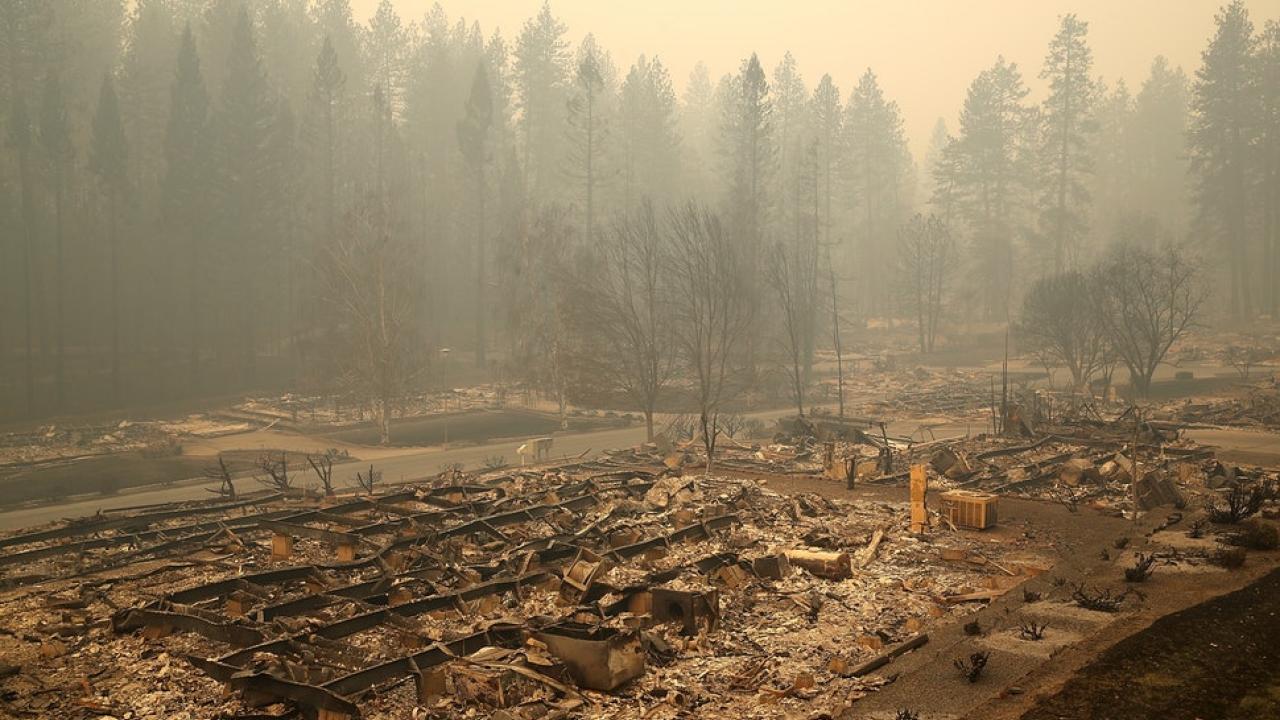
New study questions the idea that the solution to pollution is dilution
A recent article by EOS writer Jackie Rocheleau highlights a growing concern about wildfire smoke and other pollutants that continue to exist in a diluted quantity within our atmosphere. With wildfires growing in size and quantity due to climate change, the original idea that simply waiting for the pollutants to disperse would be enough to protect human health, is coming into question.
As wildfire smoke rises into the atmosphere, sunlight spurs chemical reactions that alter the smoke’s original components (primary organic aerosols) and create new ones, so-called secondary organic aerosols, over the course of hours to days. “That smoke is hanging out there for days and days and days, and it’s getting chemically cooked,” said Anthony Wexler, a professor and the director of the Air Quality Research Center at the University of California, Davis. Wexler was not involved in the new study. “And there are interesting questions there about how that’s changing the toxicity of this stuff.”
Once they enter human airways, the different aerosols likely take different routes through the body. Secondary organic aerosols are generally more oxygenated and soluble than primary ones. Primary organic aerosols are more readily taken up by fats, whereas secondary organic aerosols better dissolve in the bloodstream.
Researchers at the University of Georgia’s College of Engineering began studying wildfire emissions. Associate Professor Rawad Saleh and his team explored how the toxicity of smoke changes as it moves in the atmosphere and is exposed to different levels of UV light intensity, humidity, and temperature. They tested this aged smoke on lung cells and compared the changes with fresh smoke on the cells.
Aged smoke had fewer heavy metals and aromatics but did have more heavily oxygenated compounds. This, the researchers thought, drove different toxicity mechanisms. The fresh smoke’s aromatics and metals homed in on the cellular powerhouse, mitochondria, disrupting the way cells store and use energy. But in the aged smoke, oxygenated compounds led to higher levels of cell death.
Revealing these different toxicity mechanisms is “incredibly important,” said Laura Van Winkle, a professor of respiratory toxicology at the University of California, Davis, who was not involved in the study.
Read the full article and journal publication on EOS here.
Citation: Rocheleau, J. (2022), The Sun bakes wildfire smoke, changing its toxicity, Eos, 103, https://doi.org/10.1029/2022EO220277. Published on 13 June 2022.